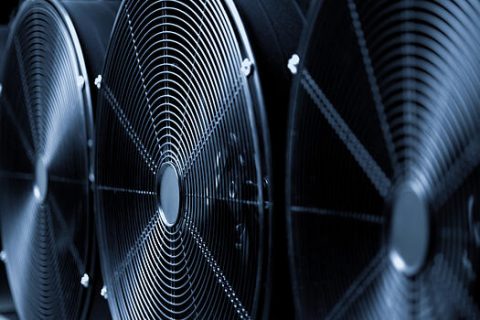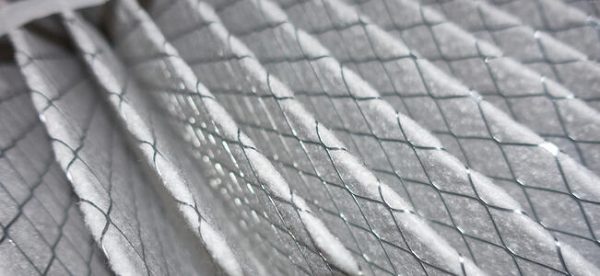Since the beginning of the COVID-19 outbreak, commonly known as Corona Virus, we have been striving to keep the virus away from our system. It’s no surprise that the COVID-19 outbreak isn’t going to go away overnight. While the health officials are trying to develop a vaccine and contain the outbreak, there are strong evidences that controlling indoor air quality will in turn lead to protecting buildings from COVID-19.
Industry authorities like ASHRAE and The US Green Building Council have provided a guidance comprising a combination of safety protocols and technical measures for building owners. ASHRAE recommends increased outdoor air ventilation, upgrading filters and adding UV disinfectant.
With that being said, here are Top 4 Preventive Measures for ensuring you have COVID-19 Resilient Buildings
Ventilation Controls on Normal Settings

Under normal conditions, a process termed as “Smart Ventilation” is used to adjust the ventilation system for the desired IAQ results. This practice can be quite misleading considering emergency situations like COVID-19 outbreak. Most buildings use Demand Controlled Ventilation (DCV) strategy which automatically reduces the outdoor air intake below the normal design rates based on occupancy. However, this may result in higher concentration of virus particles due to reduced airflow.
ASHRAE has recommended as much outdoor air as possible. While reducing recirculation of indoor air regardless of the occupancy in emergency situations. Airflow under normal settings help dilute and remove the virus particles from the air which reduces the risk of virus infection.
DCV should be temporarily disabled and ventilation systems should to configured to normal settings for COVID-19 prevention to supply as much outdoor air as possible. This can also be done easily with a Building Automation System (BAS).
Ozone Based Disinfectant Systems

When we hear about Ozone it generally strikes us as a good or a needful gas, the protector of earth blocking harmful radiation from space. While Ozone has it’s uses on space level, it has it’s used on ground level too. Ozone is said to be one of the most powerful disinfectants with effectiveness of about 50 times more of that of most popular disinfectants like chlorine. Ozone is capable of destroying bacteria and viruses (including COVID-19).
There are a few things that one should be aware of when using Ozone Based Disinfectant Systems. Ozone, when directly exposed, may cause shortness of breath or lung pain to a people with a healthy respiratory system. The symptoms may be aggravated for people with conditions like asthma and bronchitis. It is highly recommended that you check if a UVGI system meets the UL 2998 Standard – Environmental Claim Validation Procedure (ECVP) for Zero Ozone Emission.
Ozone disinfectants can be used in hotels, workplaces, Spa and beauty salons, etc as a preventive measure.
Use of Suitable Air Filters

Air Filters coupled with Ventilation Systems can further increase the effectiveness of capturing the viral particles. The most efficient air filters are those which have a Minimum Efficiency Reporting Value (MERV) of 13 to 16. HEPA filters are capable of trapping even higher percentage of fine particles.
However, filters with highest rating should not be purchased without an HVAC assessment. While capturing the tiny particles, they can restrict the airflow. As we mentioned earlier, the airflow should not drop to unacceptable values if the ventilation systems don’t have enough capacity. Buildings should not have air filters that may choke the HVAC system as renewed indoor air won’t help in keeping the viruses and bacteria away.
Don’t Ignore Other Germs within Building interiors

With media mainly focusing on COVID-19 pandemic, building owners should not overlook other bacteria and infections. If the humidity levels within the building are not controlled, it can lead to mold infestation which leads to releasing of spores in the air. People with respiratory conditions are more susceptible to these spores causing allergic reaction.
Stagnant water, over an extended period of time, can aid the growth of dangerous bacteria like Legionella bacteria. This bacteria causes Legionnaires disease which has a higher fatality rate than COVID-19. Building owners are therefore recommended to take preventive measures for growth of mold and legionella and not only coronavirus.
Building managers should also be very careful when reopening buildings since unoccupied spaces can go undetected giving rise to infestation of germs and bacteria. A thorough professional assessment of the building is highly recommended before reopening.
Lastly, COVID-19 has been hindering the operation of all business sector since the beginning of the pandemic but companies have come to realize that remote collaborations has improved the efficiency in business. This has not only helped businesses to operate smoothly but also limited the spread of infections. Construction industry has slowly started adopting innovative solutions and testing new concepts and its effectiveness which in turn may help achieving a permanent benefit for the industry.

